|
  
|
FROM SITE SELECTION
MAGAZINE, NOVEMBER 2021 ISSUE
|
 |
OPPORTUNITY ZONES
By special arrangement, Pulitzer Prize winner David Wessel documents a
rare instance where the federal Opportunity Zone program has worked as
intended, adapted from his new book “Only the Rich Can Play: How
Washington Works in the New Gilded Age.”
|
|
|
|
 |
FDI IN AMERICA
Senior Editor Gary Daughters talks to the author of a new report about
how augmented and virtual reality can aid investment attraction in an
era of limited travel.
|
|
|
CONWAY ANALYTICS
SNAPSHOT
|
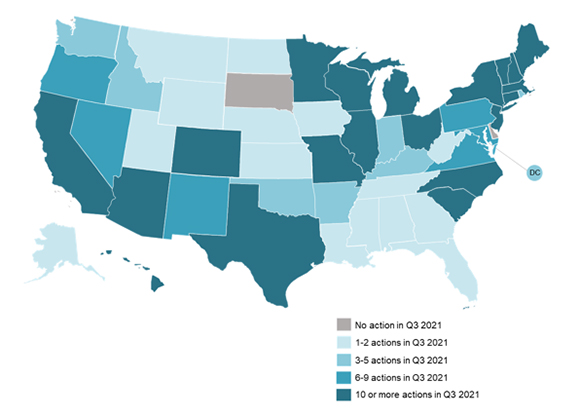
|
CREDIT: Map courtesy of NCCETC
|
|
If modern infrastructure matters to your operation, you’ll want to check
out the North Carolina Clean Energy Technology Center’s newly released
Q3 2021 edition of its 50
States of Grid Modernization report. The quarterly series
(available for purchase, but with executive summaries provided free of
charge) provides insights on state regulatory and legislative
discussions and actions on grid modernization, utility business model
and rate reform, energy storage, microgrids and demand response.
“The report finds that 48 states, as well as the District of Columbia,
took actions related to grid modernization during Q3 2021,” a release
stated, “with the greatest number of actions relating to energy storage
deployment (74), smart grid deployment (45), utility business model
reforms (44), advanced metering infrastructure deployment (38), and
distribution system planning (36).”
The map above displays the concentration of 498 grid modernization
actions that were taken during Q3 2021. New York, Illinois,
Massachusetts, California, Minnesota, and New Jersey took the greatest
number of actions during the quarter, followed by Michigan, Missouri,
North Carolina, and Hawaii. Compare and contrast with state rankings
found in Site Selection’s annual Global Groundwork Index, which blends
infrastructure project investment and job creation data and corporate
end-user facility investment and job creation data to determine where
action is heaviest. Seven states in the top 10 of the Global Groundwork
Index were among the busiest grid modernizers in Q2 2021. — Adam
Bruns
|
|
|
CHOOSE
WASHINGTON 2021-2022
|
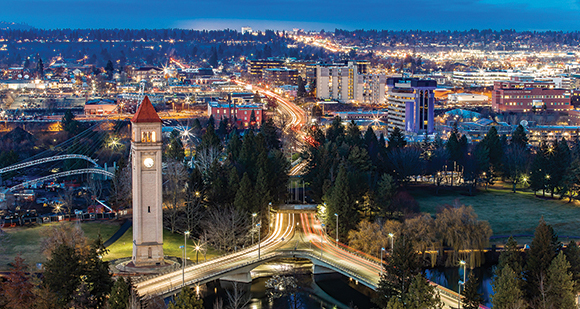
|
DEPARTMENT OF COMMERCE Q&A
Lisa Brown, director of the Washington State Department of Commerce,
shares her perspective on the state’s economic vitality.
|
|
|
|
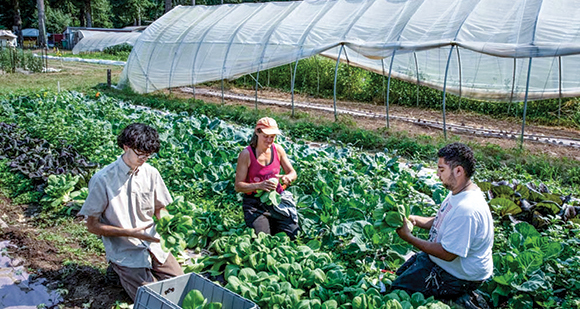 |
HIGHER EDUCATION
Washington’s universities offer diverse programs and strengths.
|
|
Site Selection works issue after issue to deliver a better product to
our readers. We would like to ask you to take just a few minutes to fill
out a quick and simple survey to let us know how we can expand our
service to you and to our industry. Please take five minutes and let us
have your expert opinion. Just click on the tab below.
All responses will be anonymous. They will be used internally by
the Site Selection staff only. Responses will not be used for any
commercial purpose.
https://forms.gle/9M4MLK7cykcFnzry9
|
|
|
SITE SELECTION
RECOMMENDS
|
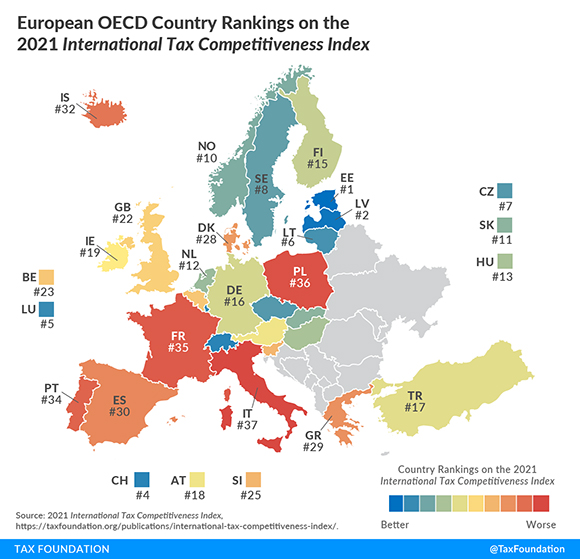
|
Map and table courtesy of the Tax Foundation |
|
|
The Tax Foundation has released its 2021 International Tax Competitiveness Index,
which finds the tax systems in Estonia, Latvia and New Zealand the most
competitive (defined as how well they promote sustainable economic
growth and investment) in the OECD. France, Poland and Italy are the
least competitive. The United States is ranked No. 21 among the 37 OECD
countries
“A well-structured tax code (that’s both competitive and neutral) is
easy for taxpayers to comply with and can promote economic development
while raising sufficient revenue for a government’s priorities,” says
the Tax Foundation. “In contrast, poorly structured tax systems can be
costly, distort economic decision-making, and harm domestic economies.”
|
|
2021 International Tax Competitiveness Index Rankings

|
Map and table courtesy of the Tax
Foundation
|
|
Serbia
Hansgrohe SE, the bath and kitchen hardware maker based in Schiltach in
the Black Forest of southern Germany, in mid-October announced this
investment in a new faucet plant in Serbia, at a site 100 km. (62 miles)
southwest of capital Belgrade. Manufacturing is set to begin by late
2023. The agreement was signed on October 15 in the presence of Serbian
President Aleksandar Vučić and Valjevo Mayor Lazar Gojković. “We looked
at sites around the world,” said Frank Semling, Hansgrohe’s chief
production officer. “Valjevo offers us the best overall package. This
includes both the availability of skilled workers and suppliers. In
addition, Serbia has an association agreement with the European Union,
which means that internationally high standards apply to investments
such as ours. At the same time, the infrastructure is convincing. From
the new location, we can quickly serve the increasing demand for our
products in Europe.” Hansgrohe, which employs 4,700 worldwide, produces
faucets in Schiltach (where the company continues to invest) and
Shanghai. Other products are produced in Offenburg, Germany, with
further plants in Willstaett and Bad Bentheim (Germany), Wasselonne
(France) and Atlanta, Georgia.
Mexico
In other kitchen and bath fixtures news, Wisconsin-based Kohler is
investing $181.2 million in a new plant in San Luis de La Paz,
Guanajuato, Mexico, with plans to create 886 jobs. President and CEO
David Kohler noted the company’s 30-year presence in Mexico, beginning
with a facility in Monterrey in 1991. Guanajuato Governor Diego Sinhue
Rodriguez Vallejo “highlighted that the Kohler Bajio project, which is
starting up, is for the Kitchen and Bathroom Division,” said a report
from MexicoNow. “Its production will be basically for export, although
it will also seek to conquer a very important segment of the Mexican
market.”
|
|
  |
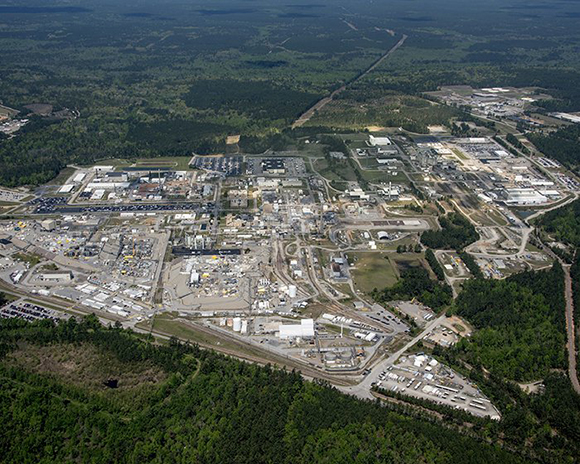
|
The Savannah River Site is a 310-square-mile site that encompasses parts of
Aiken, Barnwell and Allendale counties in South Carolina and is bordered on
the west by the Savannah River and Georgia.
Photo courtesy of Fluor and Business Wire
|
|
Nuclear Nexus: Texas-based Fluor Corp. last week
announced that the U.S. Department of Energy had selected a JV
comprising Fluor, BWX Technologies and Amentum to execute the Savannah
River Site (SRS) Integrated Mission Completion Contract, valued at up to
$21 billion. The contract’s scope of work includes liquid waste
stabilization and disposition, and potentially nuclear materials
management and stabilization, and other requirements. SRS, an industrial
complex responsible for disposition of nuclear materials, waste
management, environmental cleanup and environmental stewardship, is also
home to the Savannah River National Laboratory, and is located only an
hour’s drive from another nuclear project, the $26 billion Vogtle
nuclear power plant in Waynesboro, Georgia, recently delayed again until
fall 2022 for Unit 3 and 2023 for Unit 4.
|
|
|
|

